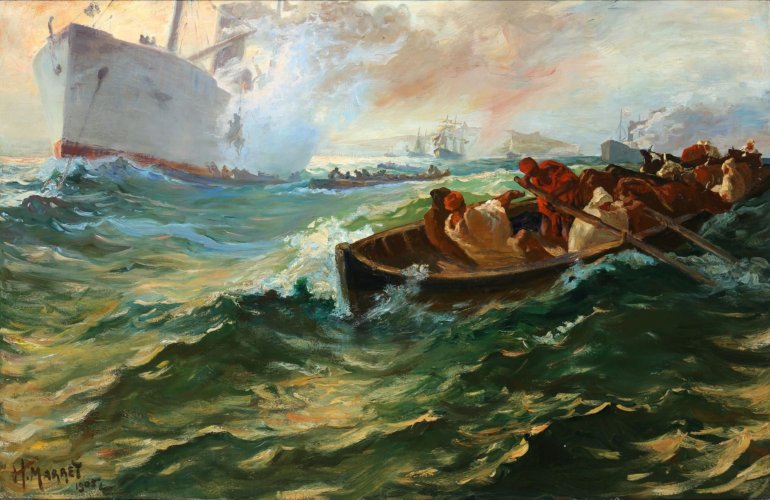Description
Henri Marret (1878-1964) inherited his talent for drawing from his father, who was a jeweler and designed his own jewelry. His father supported his son’s artistic endeavors from a young age, which resulted in Henri studying painting under Fernand Cormon, Ferdinand Humbert and Eugene Thirion. At the age of 23, he took part in the Société des Artistes Français salon exhibition for the first time, where he received an honorary distinction, and in subsequent years medals of third and second class. He painted in oil paints, watercolors, did woodcuts and aquatints. His artistic path was significantly influenced by his acquaintance with Paul Beaudouin, who taught him the technique of wall painting. The result of this are monumental frescoes in religious, public and secular buildings – he devoted more than 50 years of his life to their decorations. His friend, Maurice Denis (co-founder of the Nabis movement) considered Marret to be the best decorative painter of his time. He shared his knowledge with students at the National School of Applied Arts, where he worked as a professor for 20 years. From 1948 to 1960 he held the position of president of the Société Nationale des Beaux-Arts.
He was also involved in public life: he was an officer of the Legion of Honor, he was awarded the War Cross for outstanding behavior in the 1914-18 campaign, and at the end of the 1930s during the occupation, he served as mayor in the family estate in Fourqueux (interestingly, it was occupied in 1836 by Victor Hugo).
Description of the painting:
“On the Red Sea in Tangier” is one of the few surviving works of Henri Marret, documenting a journey to Morocco he took in 1902. The scene depicts a choppy body of water in front of the port, to which several steamers and sailing ships are moored. The too deep water prevents them from entering the port, thus the loading of goods is done by smaller rowing boats.
Two thirds of the canvas are occupied by the choppy, shallow waters of the Red Sea. On the foreground, we can see the hull of a boat carrying cattle and eight crew members. Four of them, sitting at the bow, strenuously row against the element. The remaining passengers, located at the stern, look after the animals between them. Right behind the first boat appear other sailing ships and vessels emerging from the choppy waves. The water movement takes place diagonally from right to left across the field of the painting. In the upper left corner of the canvas, a massive steamer has dropped anchor, its smoke plumes obscuring a part of the hull and part of the sky. The painter captured the moment when the cattle were being unloaded from the ship directly onto the drifting boat below.
Marret’s rendition of the element differs from the one captured in Matisse’s work (The Sea 1905-14). Here we can see a wide range of colours, a combination of shades of green, blue, yellow and orange. In the sky part, warm tones of beige, pink and purple intertwine with blue. The colour not only builds the pictorial space but also movement. The play of light and the penetrating patches of colour outlined with short brush strokes give the impression of trembling on the canvas. The rising or setting sun illuminates only the figures of the foreground and the waves surrounding them. Will they make it in time to the port?


